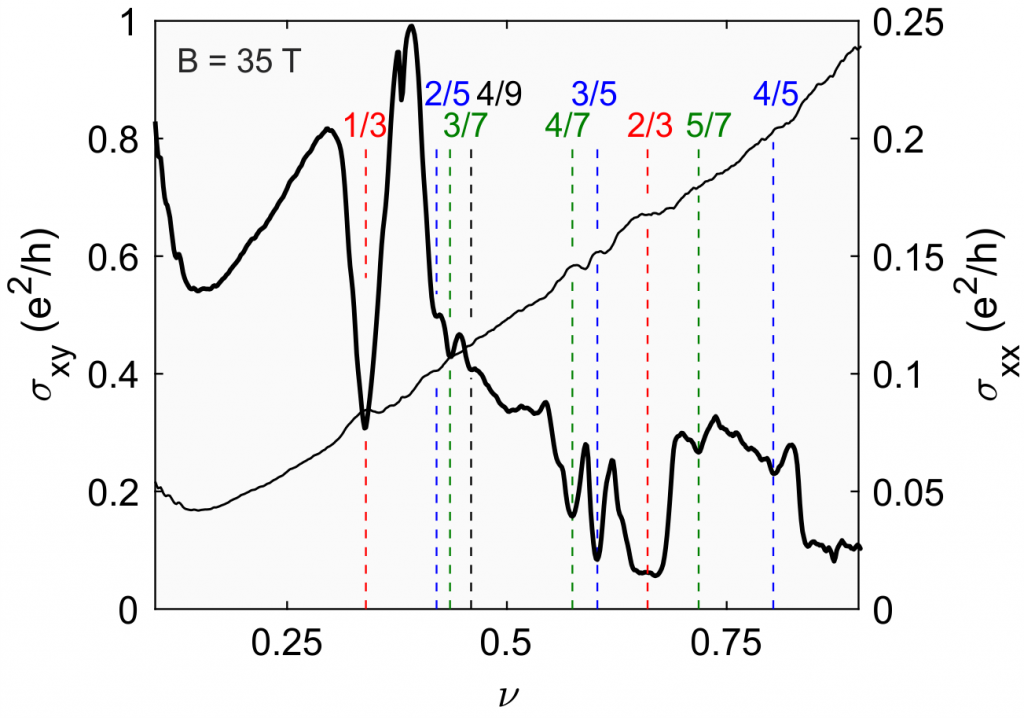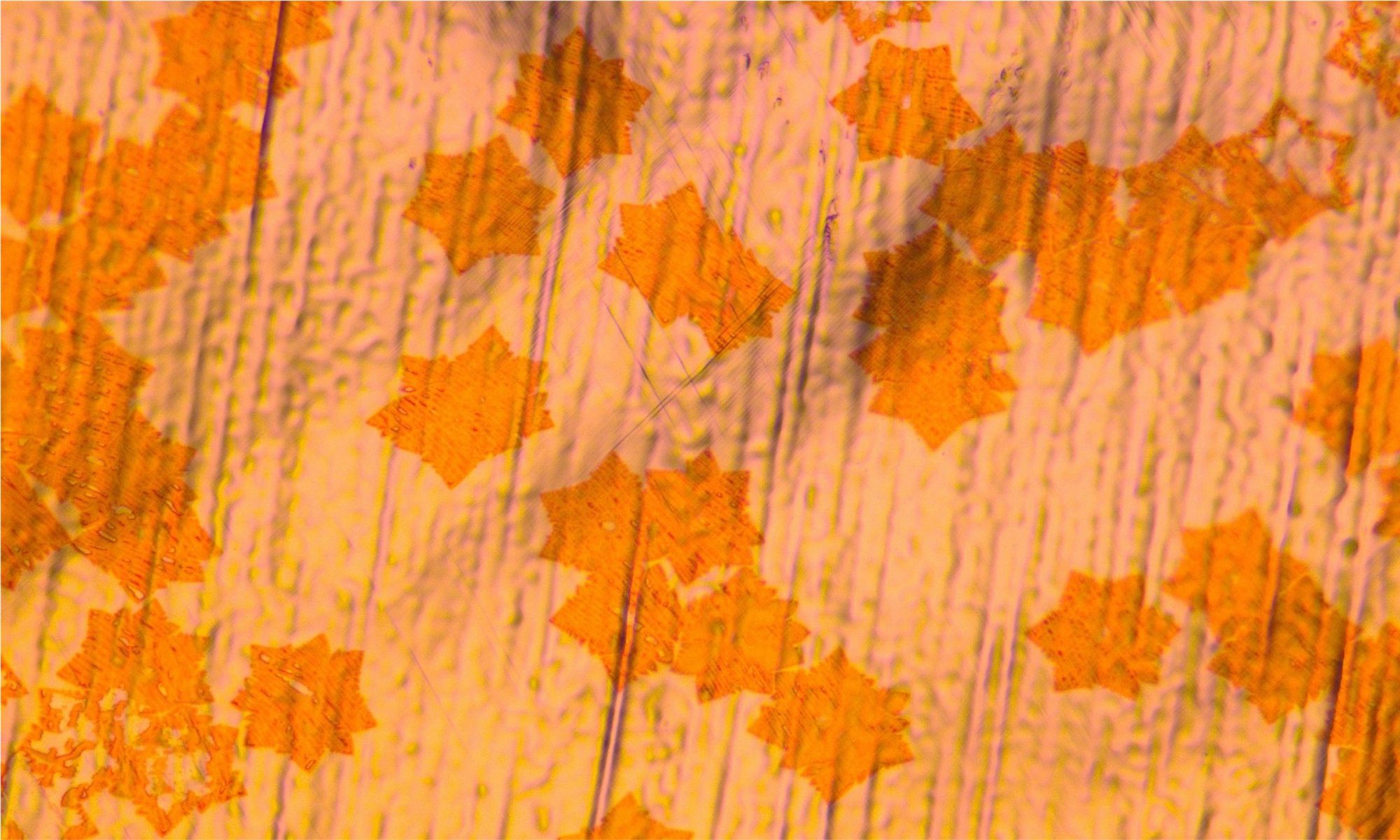CVD-grown graphene passed the ultimate test to be considered absolutely on-pair with exfoliated graphene, allowing the observation of clear signatures of the fractional quantum Hall effect.
The quantum Hall effect has always played a special role in graphene physics. Back in 2005, the observation of the half-integer quantum Hall effect was the bullet-proof demonstration that charge carriers in graphene behave as Dirac fermions. Nowadays, the level of manifestation of the fractional quantum Hall effect (FQHE) is regarded as the ultimate proof of device quality.
Observing such a fragile, interaction-driven, many-body effect requires in fact not only very high charge-carrier mobilities, but also high sample homogeniety and low residual impurities. Up to now, fractional quantum Hall effect in graphene could only be observed in devices based on mechanically exfoliated graphene; in the last volume of 2D Materials, Michael Schmitz and co-workers from the Stampfer Lab at the RWTH Aachen University reported on a detailed investigation of FHQE in dry-transferred CVD-grown graphene [1].
“To be honest, this is not a huge surprise”, says Schmitz. “We had already plenty of indications of the very high quality of the samples we can fabricate with our growth and transfer technique. But it is nevertheless extremely rewarding to see this confirmed by this type of very delicate experiments”.
The device investigated by Schmitz showed well-developed states at fractional filling factors p/3, even below 8 T. To study these states in more detail, the sample was moved to the High Field Magnet Laboratory (HFML) in Nijmegen, and characterized at magnetic fields up to 35 T. This type of measurements revealed all states at fractional filling factors ν = p/3, as well as many 2-flux composite fermions states, and even signatures of 4-flux composite fermions hole states – i.e. bound states formed by a charge carrier and 2 or 4 magnetic flux quanta.

Hall conductivity σxy and longitudinal conductivity σxx as a function of filling factor ν at a fixed magnetic field of B = 35 T and at a temperature of 300 mK
“Being able to observe the 4-flux states indicates the outstanding material quality of our device”, says Schmitz, “especially if one takes into account that, instead of state-of-the-art graphitic gates, we used in this device a standard Si++/SiO2 gate, which introduces a lot of electrostatic disorder. Using graphitic gates and different geometries it should be possible to investigate in more detail the 4-flux states, and to gain a deeper understanding of the interaction effects that drive the emergence of composite fermions states in graphene.” In the same volume of 2D Materials, a second paper by the group of Camilla Coletti (Italian Institute of Technology) also reports on signatures of the fractional quantum Hall state at n=-1/3 in CVD-grown graphene [2]. This group employs a different dry-transfer technique than the Stampfer group for picking up the CVD-grown graphene from the growth substrate. Despite the differences in the fabrication process, the two works come to the same conclusion: the quality of dry-transferred CVD-grown graphene can be absolutely on-pair with the one of exfoliated graphene.
“These two works clearly show that, at present, the main limitation to a graphene-based technology does not lie on the growth of graphene, but in the lack of scalable transfer techniques and of large-scale dielectrics”, says Christoph Stampfer. This observation makes even more interesting the current search for insulators for 2D nanoelectronics. “What I find promising is the method developed by James Edgar for growing hexagonal boron nitride (hBN) at atmospheric pressure,” says Stampfer. “We have already demonstrated that this method can give large hBN crystals of excellent quality. If we find a way to scale-up this approach, we’ll be very close to a scalable technology for high-quality graphene electronics. At the moment, I don’t see any fundamental limitation but, of course, this remains to be demonstrated.
Bibliographic information:
[1] Fractional quantum Hall effect in CVD-grown graphene
M. Schmitz, T. Ouaj, Z. Winter, K. Rubi, K. Watanabe, T. Taniguchi, U. Zeitler, B. Beschoten, and C. Stampfer, 2D Materials, 7, 041007 (2020).
DOI: https://doi.org/10.1088/2053-1583/abae7b
[2] High-quality electrical transport using scalable CVD graphene
S. Pezzini, V. Mišeikis, S. Pace, F. Rossella, K. Watanabe, T. Taniguchi, and C. Coletti, 2D Materials, 7, 2D Materials, 7, 041003 (2020).
DOI: https://doi.org/10.1088/2053-1583/aba645
